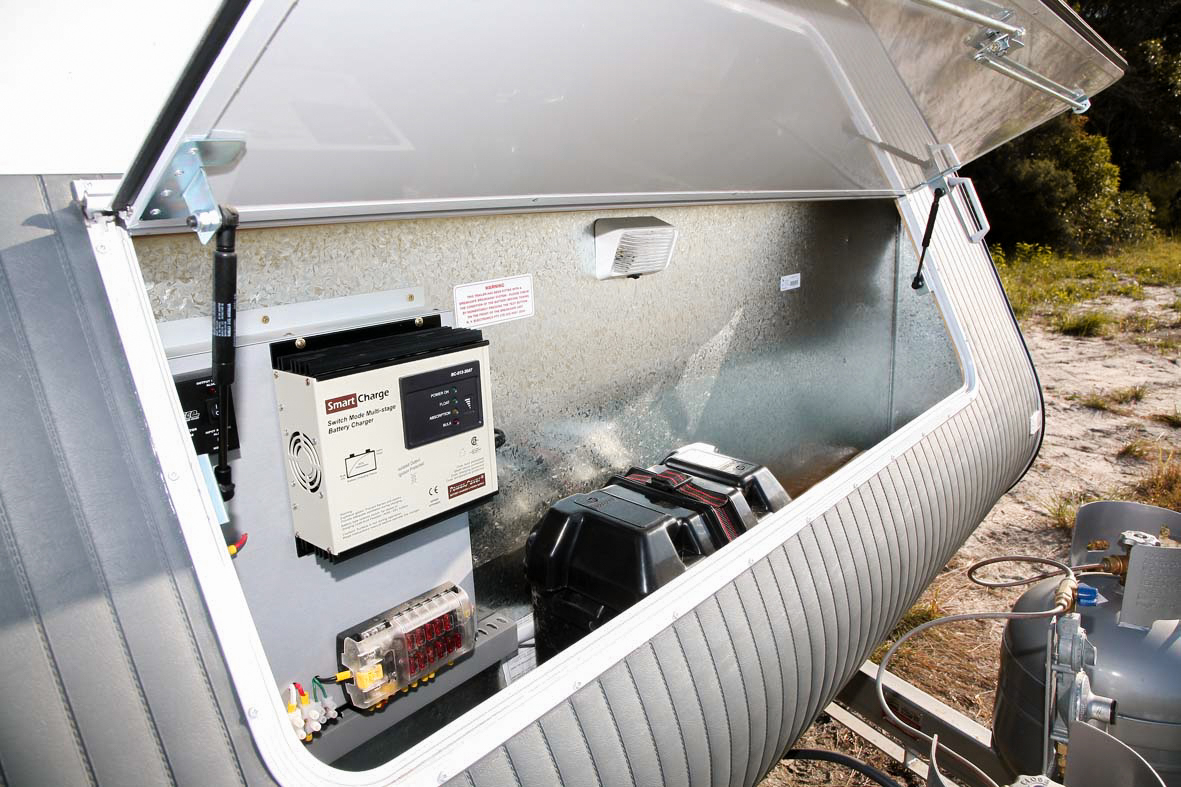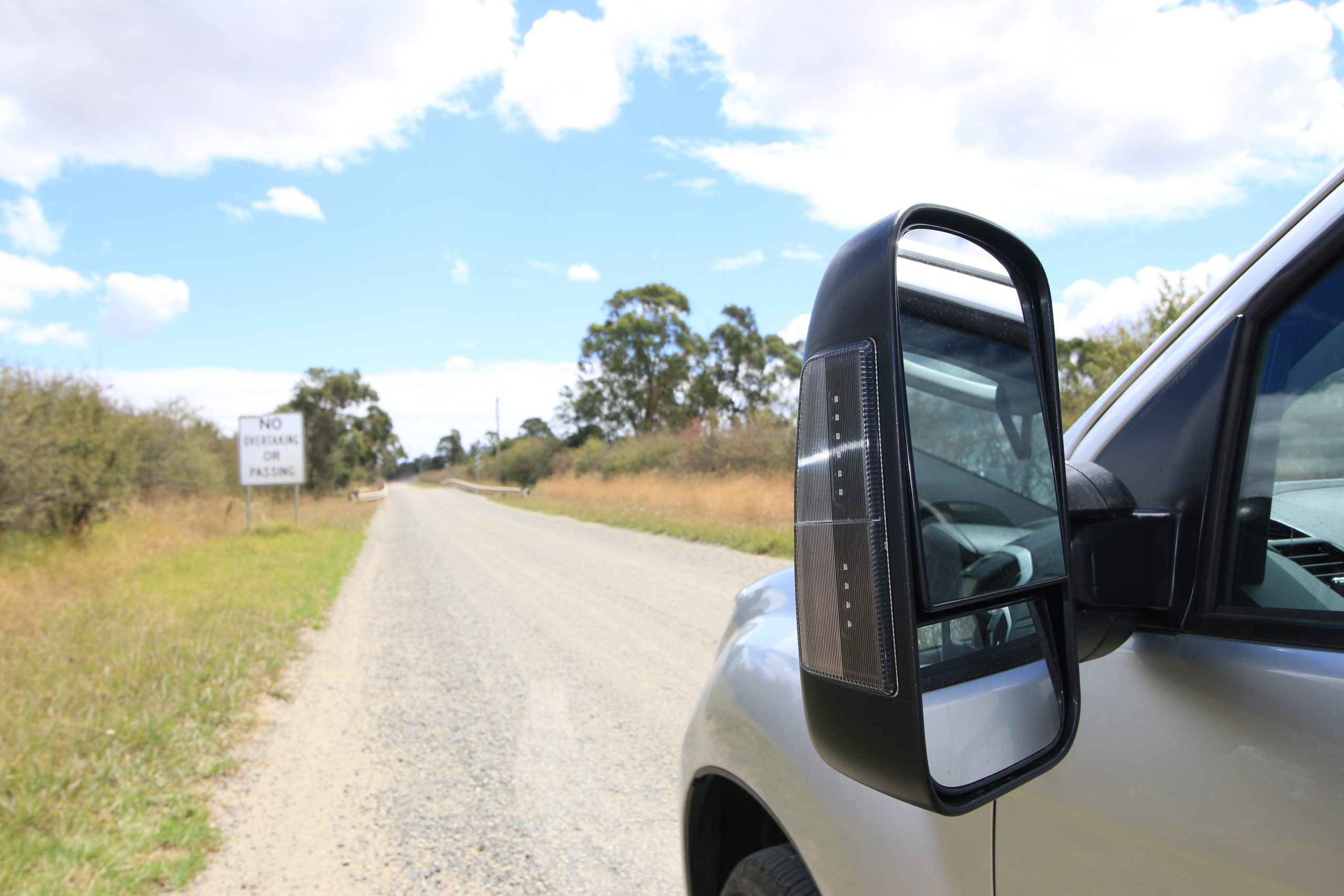Thirty or 40 years ago, when we were all towing Viscount and Millard caravans with Holden Kingswoods, just about all caravans and motorhomes had very simple electrical systems – 230V mains supply for a few powerpoints and those very elegant fish bowl-style lights.
These lights also usually had a 12V globe for when you were not camped in a caravan park and were usually powered by a ‘hot’ wire connected to the tow vehicle’s 12V battery.
Have times changed or what? Both the 230V and 12V systems in recreational vehicles have become very sophisticated, particularly on the 12V side.
Today, the average RV has at least one ‘house’ battery, a mains 230V/12V charger, 12V-only lighting, and a flatscreen TV.
There could also be solar panels on the roof, a 12V/230V inverter, a 12V compressor fridge, a DC-DC charger and 12V/5V USB charger points.
MAINS SUPPLY
Most RVs come with a two voltage systems: a 230V mains supply and a 12V battery supply. Although it is quite possible to have only a 12V system, having 230V as well is definitely an asset for running appliances such as air-conditioners, microwaves and battery chargers.
While it is still common practice to refer to mains power voltage in terms of 240V, since 2000 in both Australia and New Zealand it has been legally defined as 230V (+10%, -6%), bringing it into line with many European countries.
For mains power, all RVs should have a 15A-rated cable, which will have a larger earth pin than what you’ll find on a standard 10A household extension lead.
It is not a legal requirement to have power leads ‘tagged and tested’ but it’s not a bad idea to have them checked annually. Damaged power leads can be lethal and even a simple and thorough visual inspection is quite easy to do – look for nicks, cuts or abrasions in the insulation and, if in doubt, replace the lead or have it professionally checked.
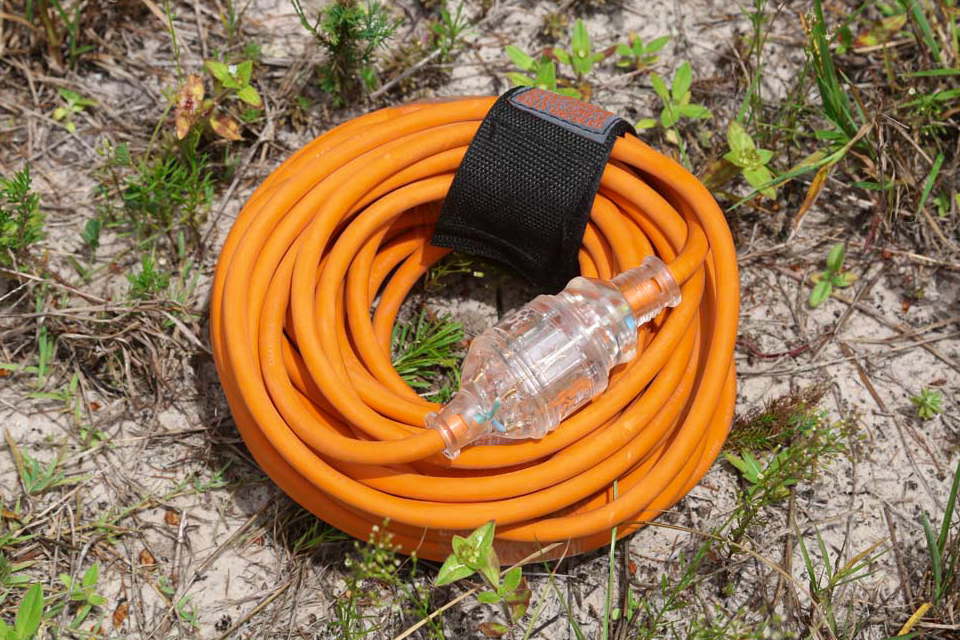
RV electrical systems are covered by two Australian and New Zealand standards:
AS/NZs 3000:2007 and AS/NZS 3001:2008. The latter is more specific to RVs and both were amended in 2012. One of the rules that gets users into trouble, usually on a retrofit, is that all circuit breakers and powerpoints need to be double pole, which means to have both the active and neutral supplies switched. In a conventional house powerpoint, only the active is switched.
The reason for double pole switching is in case the active and neutral conductors are accidently swapped around in the supply cable. Any mains power circuit in an RV should be protected by a circuit breaker and all 230V system work must be done by a licensed electrician.
GENERATORS
Generators are a reliable source of 230V mains power and are available for RV use mostly in the ranges of 1kVA to 2.4kVA, as generators of these outputs are quite portable. For RV use, the best choice is an inverter generator, which produces a sine wave that matches mains power and is therefore suitable for electronically sensitive devices.
They can, of course, also be used for battery charging and running microwave ovens and air-conditioners. However, there are a number of places where generator use is restricted or banned altogether and that may well reduce their appeal.
TWELVE-VOLT SYSTEMS
As noted above, 12V power systems have become much more complex and, in a number of areas, they cross over with 230V power. The following is more specific to 12V systems but, naturally, has to include 230V facilities as well.
BATTERIES
Starting with the heart of any 12V system is the humble (and I use that word loosely) battery. There are essentially two types: the vehicle’s starter battery, and everything else. The latter used to just cover lead acid deep-cycle batteries, but nowadays includes Absorbed Glass Mat (AGM) batteries and, more recently, lithium-ion batteries. It is these battery types that supply the ‘house load’ (an old fashioned term to distinguish between a motorhome’s base vehicle 12V electrical system and the electrical system of the motorhome’s living area).
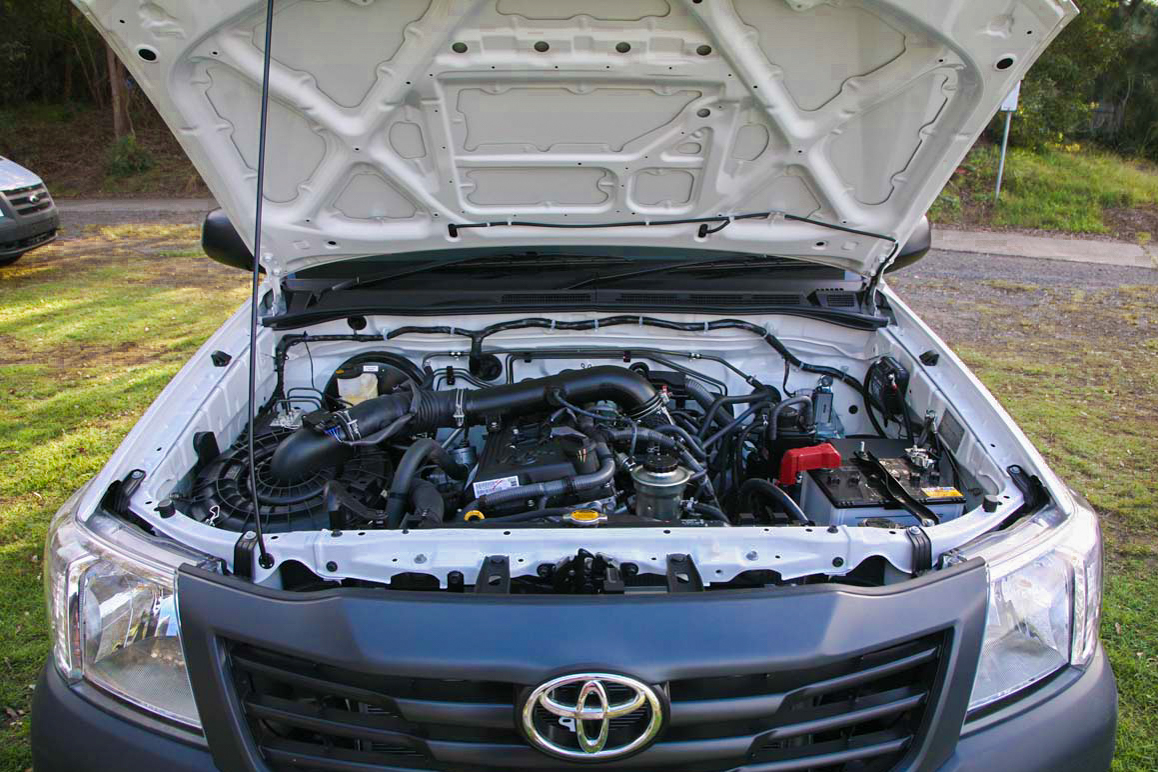
The most obvious difference between deep-cycle, AGM and lithium-ion batteries is the cost. But you get what you pay for.
Conventional deep-cycle batteries are cheaper than AGM batteries but the latter is charged more easily and can be discharged further without damage. And yes, batteries can be permanently damaged by running them flat too often.
For a traveller who mostly stays in caravan parks, a deep-cycle battery should suffice. But an AGM battery would be a better investment for someone planning on lengthy stays in remote locations.
In the weight to power department, there’s no doubt that the winner is the lithium-ion battery. They are considerably lighter than conventional deep-cycle batteries and can give a constant voltage output for 90 per cent of the battery discharge. AGMs by comparison can only do that to about 50 per cent capacity. Currently, lithium batteries are considerably more expensive than deep-cycle/AGM batteries, but it’s a fair bet that time and development will see the relative price fall. In the meantime, they can still represent good value for travellers with high 12V energy demands.
Battery capacity requirements depend on the user but a standard 100Ah deep-cycle/AGM battery will probably suffice for those who spend most of their time in caravan parks, but extra batteries should be considered for anything else. Batteries used in parallel should be of the same age and voltage output.
BATTERY CHARGING
When considering battery capacity, it’s important to also take into account the charging capability, be it on mains, via an Anderson plug, or a solar panel.

Along with the basic 12V system used in the Kingswood/Viscount era, long gone is the caravan battery that was charged only by the tow vehicle’s alternator. For starters, modern-day deep-cycle/AGM/lithium batteries require at least a multi-stage ‘smart’ charger to maximise both battery capacity and life – batteries can be damaged when under and over-charged.
Having the correct charger for lithium-ion batteries is even more essential and the latest development is a battery management system that not only charges the battery correctly but prioritises a variety of battery charging sources and loads.
With their relatively flat roofs and batteries in constant need of charging, RVs make a great platform for solar. The basic requirement is about 130W but it should be noted that some panels do not operate at their advertised capacity. Remember, too, that solar panels operate more efficiently in cooler climates. This might seem strange, but they use light – not heat – for their operation.
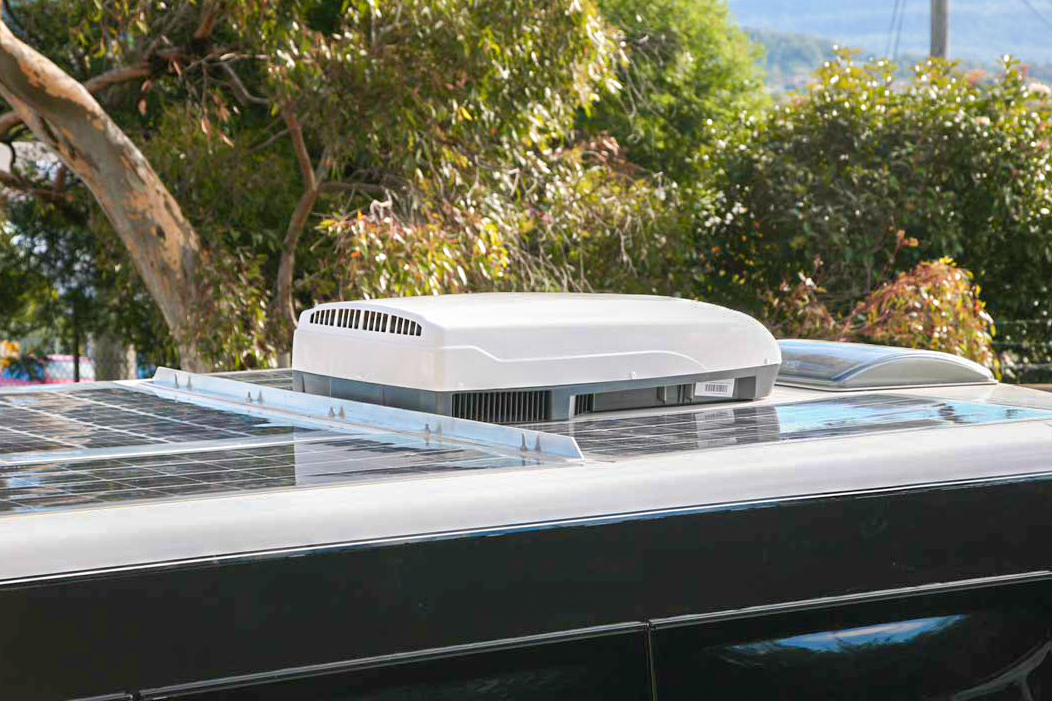
DIY AND VOLTAGE DROP
Voltage drop is a problem for 12V systems. At 230V, a 10 per cent voltage drop would barely register. But at 12V, it would be much more noticeable. Some devices that can run on 12V, such as a portable fridge, cannot tolerate anything less, and a charging circuit would suffer greatly without the necessary charging voltage.
The best way to avoid voltage drop is to have cables of the correct size. A common trap that DIYers fall into is using undersized cable when doing installation work. This is not helped by the fact that in Australia, cable is frequently sized by the diameter that includes the insulation, which could be any thickness. What matters is the diameter of the conductor.
Any new 12V circuit installation must be protected by 12V fuses and these must be rated in accordance with the cable conductor’s diameter.
As a general note, unlike 230V cabling, no licence is required for 12V work; however, a few handyman skills certainly are. When working on any 12V circuit, the fuses should be removed and the battery disconnected. To be avoided at all costs is the accidental shorting of the battery terminals, particularly lithium batteries. Electrical burns might be the least of your worries.
POWERING ON
Although the fundamentals of electricity have not changed, there has been considerable development of both batteries and electrical equipment over the last decade or so, much of which has been successfully adapted to the recreational vehicle industry. We can expect development to continue on several fronts, resulting in a more efficient use of electricity together with higher output of batteries which should, apart from anything else, reduce RV weight!
RV APPLIANCES
Like microwave ovens, air-conditioners aren’t suited to 12V use. However, if the battery capacity is large enough, there are 12V models available – at least one RV manufacturer is trying them out. A better idea might be to install a few 12V fans. There are some good-quality, energy-efficient ones available.
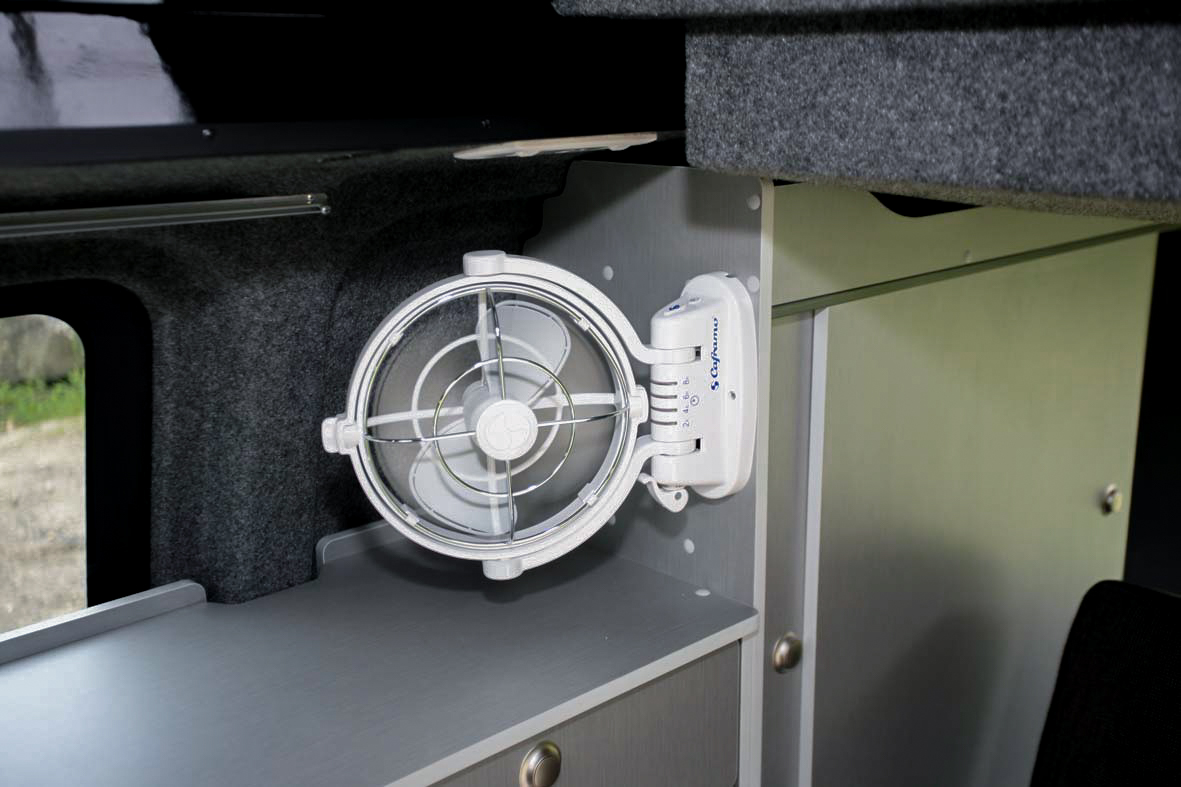
As for the RV fridge, there are two basic types available: three-way absorption fridges that can operate on 230V, 12V or gas, and 12V compressor fridges. There are advantages and disadvantages to both. While absorption fridges can be run on multiple energy sources, they are less efficient in hotter climates, for example.

